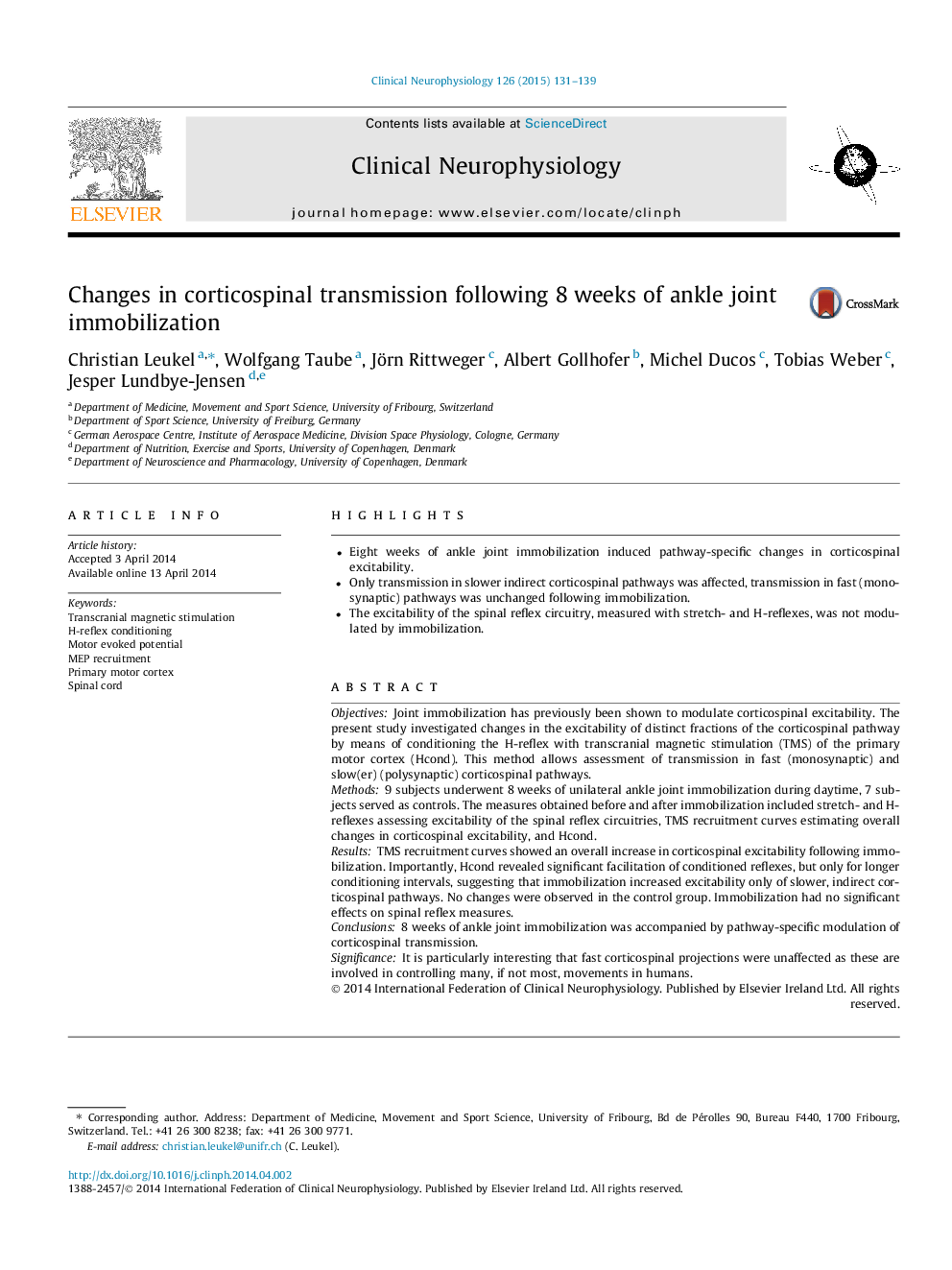| Article ID | Journal | Published Year | Pages | File Type |
|---|---|---|---|---|
| 3043218 | Clinical Neurophysiology | 2015 | 9 Pages |
•Eight weeks of ankle joint immobilization induced pathway-specific changes in corticospinal excitability.•Only transmission in slower indirect corticospinal pathways was affected, transmission in fast (monosynaptic) pathways was unchanged following immobilization.•The excitability of the spinal reflex circuitry, measured with stretch- and H-reflexes, was not modulated by immobilization.
ObjectivesJoint immobilization has previously been shown to modulate corticospinal excitability. The present study investigated changes in the excitability of distinct fractions of the corticospinal pathway by means of conditioning the H-reflex with transcranial magnetic stimulation (TMS) of the primary motor cortex (Hcond). This method allows assessment of transmission in fast (monosynaptic) and slow(er) (polysynaptic) corticospinal pathways.Methods9 subjects underwent 8 weeks of unilateral ankle joint immobilization during daytime, 7 subjects served as controls. The measures obtained before and after immobilization included stretch- and H-reflexes assessing excitability of the spinal reflex circuitries, TMS recruitment curves estimating overall changes in corticospinal excitability, and Hcond.ResultsTMS recruitment curves showed an overall increase in corticospinal excitability following immobilization. Importantly, Hcond revealed significant facilitation of conditioned reflexes, but only for longer conditioning intervals, suggesting that immobilization increased excitability only of slower, indirect corticospinal pathways. No changes were observed in the control group. Immobilization had no significant effects on spinal reflex measures.Conclusions8 weeks of ankle joint immobilization was accompanied by pathway-specific modulation of corticospinal transmission.SignificanceIt is particularly interesting that fast corticospinal projections were unaffected as these are involved in controlling many, if not most, movements in humans.
